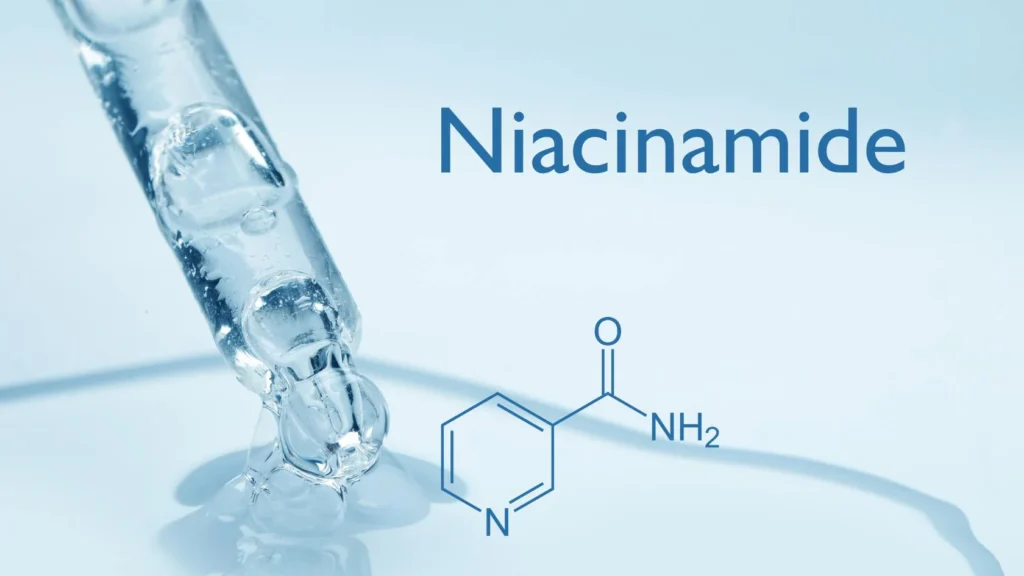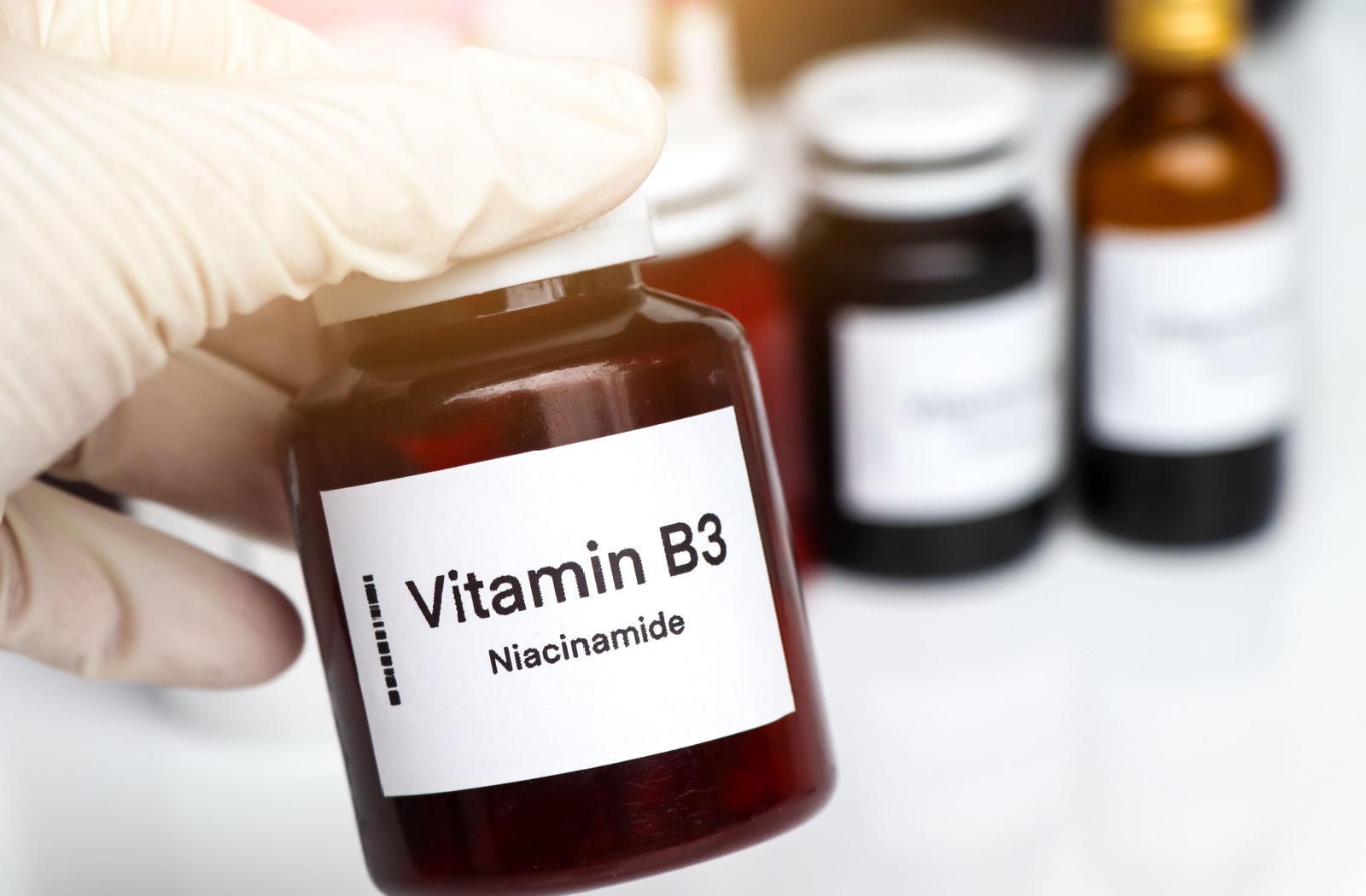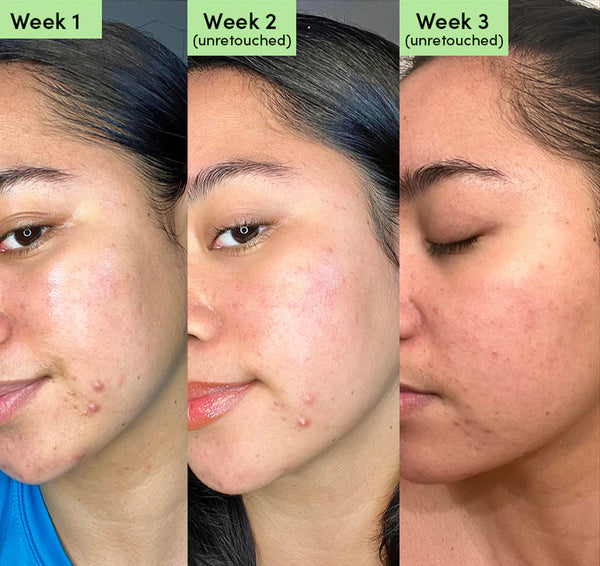Table of Contents
ToggleNiacinamide for Glowing Skin: The Ultimate 2025 Guide to Radiant, Healthy Complexion
In a world where skincare trends are constantly evolving, niacinamide is a classic and scientifically supported superstar. In 2025, this form of vitamin B3 will continue to be the most widely used in retail establishments, clinical research, and TikTok routines. It’s a unique combination of powerful, safe, and surprisingly soft. Everything you need to know about niacinamide will be covered in this comprehensive guide, including its definition, mechanism of action, target audience, top products, practical effects, and new skincare products that complement it.
What is niacinamide .
A water-soluble form of vitamin B3 (niacin), niacinamide supports the health of your skin, brain, and nervous system. It is applied topically to address various issues, including:
- A skin tone that isn’t even
- Dullness and lack of lustre
- Fine lines and wrinkles
- Larger pores Swelling
- acne Melasma
- pigmentation
At the cellular level, niacinamide alters how skin cells repair themselves, communicate with one another, and divide.

How niacinamide functions
Niacinamide helps with a wide range of skin issues because it functions in various ways. What takes place beneath your skin is as follows:
1. It promotes the synthesis of lipids and ceramides.
Ceramides are the building blocks of your skin’s barrier. By strengthening this barrier, niacinamide prevents transepidermal water loss and increases the skin’s resistance to UV rays and pollution.
2. Prevents melanin transfer
It reduces dark spots and evens out skin tone by preventing pigment from entering skin cells.
3. Promotes the synthesis of ATP, the energy source for cells.
It increases NAD+/NADH coenzymes at the mitochondrial level, which support healthy skin cell function and healing.
4. Reduces Inflammation
It is ideal for those with sensitive skin, rosacea, or acne because it inhibits the cytokines that cause redness.
5. Regulations Sebum
niacinamide helps regulate oil production for skin that is oily or has both dry and oily areas.
What Does the Study Indicate?

The Journal of Dermatological Science published a 12-week study that found that applying 5% niacinamide reduced hyperpigmentation by 68%. According to a different study, niacinamide, particularly when combined with peptides, improved the smoothness and elasticity of skin in just eight weeks. Clinical studies carried out in South Korea and Japan between 2024 and 2025 confirmed niacinamide’s effectiveness in treating melasma and reducing scarring from acne. This benefit is no longer a trendy guess; rather, it is an ingredient supported by years of data and actual outcomes.
Niacinamide Barrier-Repair Focused Routines in 2025
- “Skin cycling” with peptides and niacinamide on nights when retinol is not being used.
- Products that combine niacinamide and prebiotics to enhance skin flora are examples of blends that improve the microbiome.
- Skinimalism involves using two-in-one serums and moisturisers that hydrate and brighten the skin, with niacinamide as the primary ingredient.
- Snail mucin, hyaluronic acid, and niacinamide combine to give your skin a persistent bounce and glow.
The Greatest Methods for Using Niacinamide (With a Complete Routine)
Morning Routine
Gentle Cleanser
Hydrating Toner (Optional)
Niacinamide Serum (5–10%)
Moisturizer with ceramides or peptides
SPF 30+ Sunscreen
Pro Tip: Niacinamide and sunscreen together boost pigment control and brighten skin faster.
Night Routine
Oil Cleanser or Makeup Remover
Exfoliating Toner (AHA/BHA) – 2x a week
Niacinamide Serum or Cream
Barrier Repair Moisturizer
If using retinol, alternate days or layer niacinamide first to buffer irritation.
The Ideal Niacinamide Concentration
| Concentration | Effect | Suitability |
|---|---|---|
| 2–5% | Great for sensitive skin, daily use | Beginners, rosacea-prone users |
| 10% | Brightening, acne, oil control | Normal to oily/combination skin |
| 20%+ | Spot-correcting, pigmentation | Use as a targeted treatment only |
Higher is not always better. Stick with 5–10% unless guided by a dermatologist.
Niacinamide Combinations That Are Effective
| Ingredient | Benefit with Niacinamide |
|---|---|
| Vitamin C (L-Ascorbic Acid) | Double antioxidant defense and glow |
| Retinol | Less irritation, stronger anti-aging |
| Zinc | Acne control and sebum regulation |
| Hyaluronic Acid | Intense hydration and plumping |
| Peptides | Enhanced skin elasticity and repair |
| Tranexamic Acid | Advanced pigmentation reduction |
| Centella Asiatica (Cica) | Calming and barrier-repair support |
Niacinamide for Various Skin Types
- It reduces sebum, tightens pores, and soothes breakouts on oily or acne-prone skin.
- For dry skin, niacinamide retains moisture and fortifies the skin barrier.
- Sensitive Skin: Reduces inflammation without irritating the skin.
- For older skin, this product increases skin elasticity and smoothes out wrinkles.
- For combination skin, niacinamide hydrates dry areas while balancing oil production in the T-zone.

Avoid these errors when taking niacinamide
- An excessive number of actives stacked on top of one another: An excess of niacinamide and acids can cause irritation or purging.
- Using Poorly Made Products: Some lower-quality products oxidise quickly and lose their strength.
- Not wearing sunscreen: UV rays reverse the brightening effects of niacinamide.
- Combining With Vitamin C Without Stabilisation: Seek properly manufactured combo products.
Insider Dietary Advice for Niacinamide
Niacinamide demonstrates your internal health, not just your external health.
Foods high in vitamin B3 (niacin)
- include chicken and turkey breast.
- Salmon and tuna
- Beans and peanuts
- Brown rice and fortified grains
- The mushroom
Consuming these foods as part of a healthy diet promotes internal cell turnover and collagen synthesis.
Niacinamide Product Picks for 2025 (Top Recommendations)
| Product | Type | Best For |
|---|---|---|
| The Ordinary 10% + Zinc | Serum | Acne-prone, budget-friendly |
| Paula’s Choice 10% Booster | Serum | Pigmentation, premium formula |
| Glow Recipe Watermelon Glow Niacinamide Dew Drops | Serum/Primer | Glowy finish for day |
| CeraVe PM Moisturizer | Cream | Dry/sensitive skin barrier |
| La Roche-Posay Mela-D Pigment Control | Serum | Melasma and discoloration |
How will niacinamide fare in 2025 and beyond?
- Intelligent Delivery Methods: Deeper and more regulated delivery is ensured by nano-encapsulated niacinamide.
- AI-Powered Formulas: Customised skincare regimens incorporate microbiome and DNA testing, along with niacinamide blends.
- Derm-grade treatments include niacinamide serums and microneedling to address scars and deeper pigmentation.
Concluding Remarks: The Reasons Niacinamide Will Become a Skincare Icon in 2025
In a crowded market, niacinamide remains a modest hero. It’s a solution that has been scientifically proven to work without irritating your skin or complicating your routine. If you have redness, dull skin, acne, or signs of ageing, niacinamide might be the mild yet powerful solution you’ve been seeking. It’s not just another “brightening” ingredient; it’s an ally for skin health that enhances the benefits of your current skin care routine.
TL;DR: Key Ideas
- A powerful vitamin B3, niacinamide gives skin a smooth, youthful glow.
- It eliminates fine lines, dark spots, oiliness, and acne without irritating the skin.
- Niacinamide works well with peptides, vitamin C, retinol, and other substances.
- It functions optimally in serums or creams that contain a concentration of 5–10%.
- In the future, smart delivery systems will go even farther.
FAQs : About Niacinamide
What is niacinamide, and how does it assist your skin?
Niacinamide, often known as vitamin B3, is a strong skincare component that improves skin tone, reduces pores, controls oil, and strengthens the skin barrier.
Does niacinamide help skin that glows?
Definitely! It makes your skin glow by brightening it, keeping it moist, and making it less drab.
Is it safe to use niacinamide every day?
Yes, you can use niacinamide every day, in the morning and at night.
What percentage of niacinamide is optimal for skin that looks healthy?
A 5% dosage works best for most skin types. If you have sensitive skin, start with 2%. If you have oily or acne-prone skin, 10% may be best.
Can you take niacinamide and vitamin C at the same time?
Yes! In 2025, new formulations will make it safe and effective to use both, either in layers or in the same product, as long as the pH levels are right.
Does niacinamide help with acne and scars?
Yes. It reduces sebum, soothes inflammation, and over time, it fades dark spots and marks caused by acne.
Is niacinamide useful for skin that is sensitive or dry?
Yes, for sure. People say it’s not irritating, calms skin, and fixes barriers, which makes it perfect for skin that is dry or sensitive.
How long does niacinamide take to work?
Most people notice changes in their skin within 2 to 4 weeks of using it every day.
Is it okay to use niacinamide with retinol or AHAs/BHAs?
Yes, but do it gently so you don’t get irritated. Niacinamide might make your skin less susceptible to things like retinol that are active.
What terrible things happen when you use niacinamide?
There aren’t many negative effects! Some people may feel a little flushed or tingly when the concentration is high, but it’s normally safe and well-tolerated.